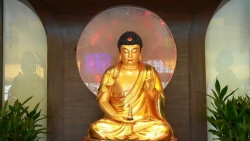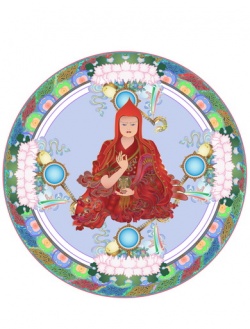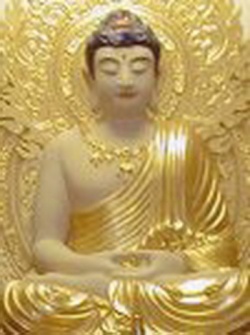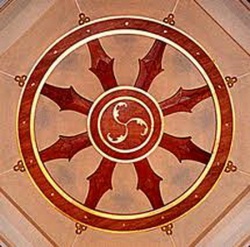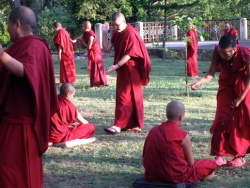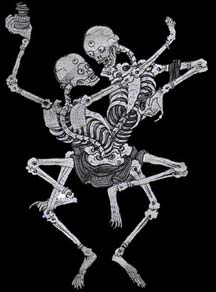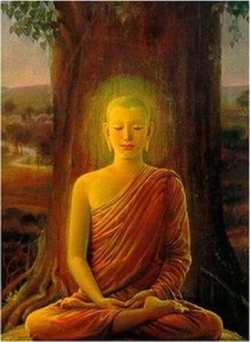Tibetan Folk Custom
Tibetan Name
Tibetan name often has two words or four words. Most of them originate from the Buddhism works. So many Tibetan people have the same names. In order to tell the difference, Tibetan often add the old or the young, the character of the person, the birth place, the residence or his career title before their Tibetan names.
When a baby is born, the parents ask the lama to name the baby. Most of the names are given by the Lama, which come from the Buddhism scripture, including some words symbolizing happiness or luck, for example, Tashi Phentso, Jime Tsering, etc.
Four surnames are important in a persons life: father’s, fathers mothers, mothers, and mothers mothers. If two persons surnames coincide at any level, they are relatives. This rule is not limited to the fathers surname: if one persons mothers surname is the same as anothers fathers surname, the two are also relatives.
Related men of the same age group can call each other brother. When men and women with the same surname meet, however, they should be demure and cannot consider love or marriage. Such a rule was set by their forefathers and handed down over thousands of years. Nobody can alter or violate it. Genealogy is traced from parents and grandparents back six to eight generations. People with the same surname but from different families are considered to be linked by blood regardless of the generation.
Most people observe these traditional rules. However, because some people do not pay much attention to surnames or are mistaken about them, they make jokes uninhibitedly or even fall in love and get married. In this case, relatives and friends will condemn them. If they are close relatives, they will be regarded as heretics who have soiled the familys good name. People will deride and insult them, making them feel too ashamed to show their faces.
As for making friend, Tibetan stresses being "well-matched." A friend need not have similar economic status, but he must have an immaculate surname. The surnames of blacksmiths and butchers are generally thought to be unclean, although they are not related to blood ties. On the whole, Tibetans are very loyal to their family name.
If a stranger moves in, it is necessary to know his surname. A person who does not know his own surname will suffer discrimination. It will be difficult for him to gain a foothold in the community and he cannot expect to mix and make friends. A Tibetan will never change his surname, wherever he goes, whatever happens.
When visiting relatives or friends, chatting or joking, no matter how simple the occasion, how lively the atmosphere, the tone is always set by one factor a persons surname.
Tibetan Burial Ceremony
Sky burial:Sky burial is to feed the vulture with the body. After the vulture finishes eating the body and fly into the sky, the Tibetan people think that the dead man will go to the heaven.
The sky burial is held at the sky burial spot. There is a fixed place in different places. After one man dies, his body will be held for several days when the lamas are invited to chant scripture and select someday to hold the funeral.
On the day of funeral, it is quite early when someone is hired to carry the body to the sky burial spot. The man in charge of the sky burial burns incense first. Just then, the vultures gather there as they see the smoke. Then the man undressed the dead man and cut the body into pieces. The bones are pounded into pieces, too. Tsampas is used to mix the pieces. At last, the man whistles to call the vulture to eat the pieces, without anything left.
Cremation:Cremation is with lower rank than the stupa burial, only submitting to the Living Buddha and the High Lama. Others are forbidden to use this burial.
Before cremation, people wrap up the body into the sitting position and tie it to the firewood pile. At the same time, the lama chant scripture for the spirit of the dead when people spill oil on the firewood and light the fire.
After finished, the ash of the dead is taken to the peak to sprinkle in the wind or put in to a river.
Earth Burial:Earth burial ceremony is an original burial tradition of the Tibetan people, but when sky burial ceremony is popular, the Tibetan people seldom use it because they think the one use earth burial can be reincarnated.
River Burial:There are mainly two kinds of forms of river burial ceremony.
One is to throw the whole body into the river, the other is to cut the body into pieces and throw them into the river.
Stupa Burial:Stupa burial is the burial ceremony with the highest rank. Only Dalai, Panchen and other High Lama can be honored.
When the High Lama passes away, his body fluids are deprived by several kinds of valuable medicinal materials and spices times. After dried, it is wrapped up by silk and put inside the stupa to be long kept. The stupa have several kinds, such as gold stupa, silver stupa, copper stupa, wood stupa, earth stupa and so on, according to the position of the Living Buddha.
When Dalai and Panchen pass away, their bodies are put inside the gold stupa, but the body of Gandan Tripa is put inside the silver stupa. The stupa is kept in different temples.
Tibetan Festival
For Tibetan people, who have devoutly worshipped Tibetan Buddhism for more than 1,300 years, festivals are usually religious anniversary than mundane carnival.
Tibetan Buddhism has a profound influence on the many festivals in the region. Many of the festivals have evolved into purely religious events due to the fact that Tibetan people, long faced with extremely harsh natural conditions and heavy labor, have continually yearned for the blessings and protection of Buddha. They indeed believe that Buddha will help them effect a change in their fate.
The Tibetan calendar, which is quite similar to the lunar calendar followed in areas home to members of the Han Nationality, lists festivals in almost every month.
The festivals in Tibet are very important not only for religious purposes, but also for social life and entertainment. Through most are designed to teach illiterate people through dance, theatre and chants about the significance of important happenings or religious lessons, they are a welcomed occasion for people to meet each other.
Shoton Festival:Shoton festival is one of the most significant Tibetan festivals. A Shoton is the transliteration of two Tibetan words which means "the Yoghurt Banquet" in Tibetan. This Tibetan festival is for eating yoghurt and opera festival. In ancient times pious folks went into mountain hermitages for penance, and on the last day, Yogurt was served for meal followed by entertainment of folk songs and dances. Since 7th century, opera performances were held for days in Norbulingka. Presently, opera contests and distribution of prizes are held for seven days.
In 1642, Gelu Sect of Tibetan Buddha took control of Tibet and the 5th Dalai got enthroned. Since the 5th Dalai lived in Drepung Monastery, this place became a political and cultural center at that time. On 30th June in Tibetan calendar, thousands of people rushed to the Drepung Monastery to offer yogurt to the 5th Dalai Lama and then this day was developed a Tibetan festival called Shoton festival. On this day, the 5th Dalai would come out of his palace to watch Tibetan opera performance and the so-called Iron-Club Lamas also take shifts on this day. After the White Palace of the Potala Palace was completed, the 5th Dalai moved to this grand palace and the Shoton festival celebration was also moved to Deyang Hall in this palace. When the 7th Dalai was old, he was suffering from many kinds of diseases, so his doctors suggest that he move to Norbulingka to have a bath which would do some good to his health. During 1753 to 1757, he lived here every summer. Until the 8th Dalai, Norbulingka became the summer palace for the Dalai Lama and so every year, the main stage of the Shoton performance was moved here. For 200 years, Drepung Shoton, the Potala Shoton, and Norbulingka Shoton have coexisted and apparently Norbulingka is the center of the center.
Presenting Katag:Presenting Katag is a common practice among the Tibetan people to express their best wishes on many occasions, such as wedding ceremonies, festivals, visiting the elders and the betters, and entertaining guests. The white Katag, a long narrow scarf made of silk, embodies purity and good fortune.
Tibetan Calendar
The Tibetan calendar, a kind of almanac created by Tibetans has a history of 1300 years. The Tibetan calendar is mixed with the calendar of Yin and Yang. Tibetan calendar is divided one year into four seasons: winter, spring, summer and autumn. The first month of the twelve is Yin (correspondent to March). The big months alternate with the small months. After every two or three years an intercalary month is added to regulate the seasons. It is quite different between the intercalary time and agricultural calendar. Due to being influenced by the Han calendar, the heavenly stems have always designed the Tibetan calendar and Earthly branches as annuals. Its difference is used the Five Elements to go instead of ten Heavenly stems. Jia yi (the first and the second of the ten heavenly stems) is symbolized of wood. Bing din (the third and the fourth) is symbolized of fire. Mao ji (the fifth and the sixth) is symbolized of earth. Geng xin (the seventh and the eighth) is symbolized of gold. Ren kui (the ninth and the tenth) is symbolized of water. Any of the twelve animals goes instead of the twelve Earthly branches such as Zhi is symbolized of the rat. Chou is symbolized of oxen and so on. For instance, Jia zhi year in lunar calendar is called the year of fire tiger in Tibetan calendar. A cycle of sixty years is called “Rabchung” in Tibetan calendar, which is similar in content to “the sixty year-old” in the hinterland of China.
Tibetan Toasting
When Tibetan people present you a cup of wine, you should dip your ring finger in the wine and flick the wine to the sky, in the air and to the ground respectively to express your respects to the heaven, the earth and the ancestors before sipping the wine. Then the host will fill the cup, and you take a sip of the wine again. After the host fills your cup three times, you will take the whole cup of the wine.
Taboos in Tibet
Some basic etiquette rules that should be followed when in Tibet include:
- Never touch the head of a Tibetan, the head is considered as a sacred part of the body.
- Show proper respect in the temples, don’t wear noisy shoes, drink alcohol, smoke or make unnecessary noise.
- Don’t put your arms around someone’s shoulders.
- When visiting a temple, follow the pilgrims and circle the temple clockwise, never counter-clockwise.
- Never touch, sit on or walk over any religious items such as prayer flags or texts.
- Don’t kill any animals or insects in monasteries.
- Don’t be intrusive during religious ceremonies, this means being respectful when taking photos.
- Don’t harm animals wearing red, yellow or green cloth.
- Don’t step on the threshold of Tibetan homes.
- Don’t spit in front of people.
- Don’t throw garbage into a fire.
- Don’t engage in strong displays of public affection.
- Dress modestly.
Greetings
It is a courtesy that when Tibetan people meeting and greeting to you, they will put their hands palm to palm in front of chest and stretch out their tongue to show their respects to you. You may put your hands in front of your chest and say "Tashidele" (good luck) to them.
Tibetan Food and Drinking
In the winter, beef and mutton are cut into long stripes to be air-dried in the circular ground caves or bins walled with stones or dungs. Dried beef and mutton keep better and longer, as the bacteria in them are killed during the drying process in deep winter. Dried meat also packs well. In the next year, the dried meat will be Bar-B-Qed or be eaten raw.
Big chucks of fresh meat are boiled in a pot. Salt, ginger, spices are added. The meat is served when it changes colour. People take the meat by hands and cut them with the carried knives. The breasts and spareribs are for the guests. The tails of white sheep are for the guests of honor. If a young man is treated with a tail of white sheep in his girl friends house, it implies that he can hope.
There are four different sausages in Tibet food: blood, meat, flour and liver.
Milk is drunken fresh or made yogurt, or is separated by churning into butter and curds.
The Tibetan butter is home-made and can be further processed and refined into butter known elsewhere. Butter is used for food with `tsamba, tea etc., or for the fuel of lamp.
After butter is made from milk, the remains become sour and can be made curd. Milk curd placed in the mouth and sucked on helps to quench thirst and can be mixed with barley flour to make curd-pastry, a holiday delight.
The milk is boiled first, after removed from stove; some old yogurt is added.Yogurt will form in a few hours. In the central and western parts, the yogurt is thin and smooth. In the east, it is too thick to stir. Yogurt is mentioned in the famous poemthe story of Gesar, and has been a Tibetan food for more than 1,000 years.
The staple Tibetan food is barley flour (rtsam-pa), which is consumed daily. Other major foods include wheat flour, yak meat, mutton, and pork. Dairy products such as butter, milk, and cheese are also popular. The people in the higher altitudes generally consume more meat than those of the lower regions, where a variety of vegetables is available. Rice is generally restricted in consumption to the well-to-do families, southern border farmers, and monks.
"Tubo", a savoury evening gruel made of lumps of wheat flour, tsamba, dried meat and a tuber called "yuangen".
Tibetan drink with which you will become most familiar by the end of your stay is jasmine tea. For contrast, try the famous and unique Tibetan tea. To make it, tea is boiled and pounded in a churn with yak butter and salt. It is kept hot in a thermos for instant using during the day. It helps to handle the unusual taste of Tibetan tea by thinking of it as soup.
Tibetan soft drinks include a non-caffeinated Cola and Hi-Orange. Electrolytic Jian Li Bao soft drinks come in a variety of flavors including lemon and honey, and pear and honey.
Two Tibetan drinks--tea and barley beer (chang)--are particularly noteworthy. Brick tea from China and local Tibetan tea leaves are boiled in soda water. The tea is then strained and poured into a churn, and salt and butter are added before the mixture is churned. The resulting tea is light reddish white and has a thick buttery surface. Chang, which is mildly intoxicating, is thick and white and has a sweet and pungent taste.
Due to the high altitude of Tibet, the water boils at 90 degree Celsius, and cooking with water is impossible. The diet and foods are peculiar in Tibet. The Tibetan diet consists mostly of meat, milks and other high-protein foods. The main staple is tsamba. Tea is a necessary. Travelers usually bring dried meat, tsamba, and tea for foods. There are three ways to make tea: simple tea, milk tea and butter tea. The most common tea leaves are produced in the Han Land, as Fu Tea from Hunan, Tou Tea from Yunnnan and Ta Tea from Szechuan. Tibetan tea-drinking forms a special `tea culture.
